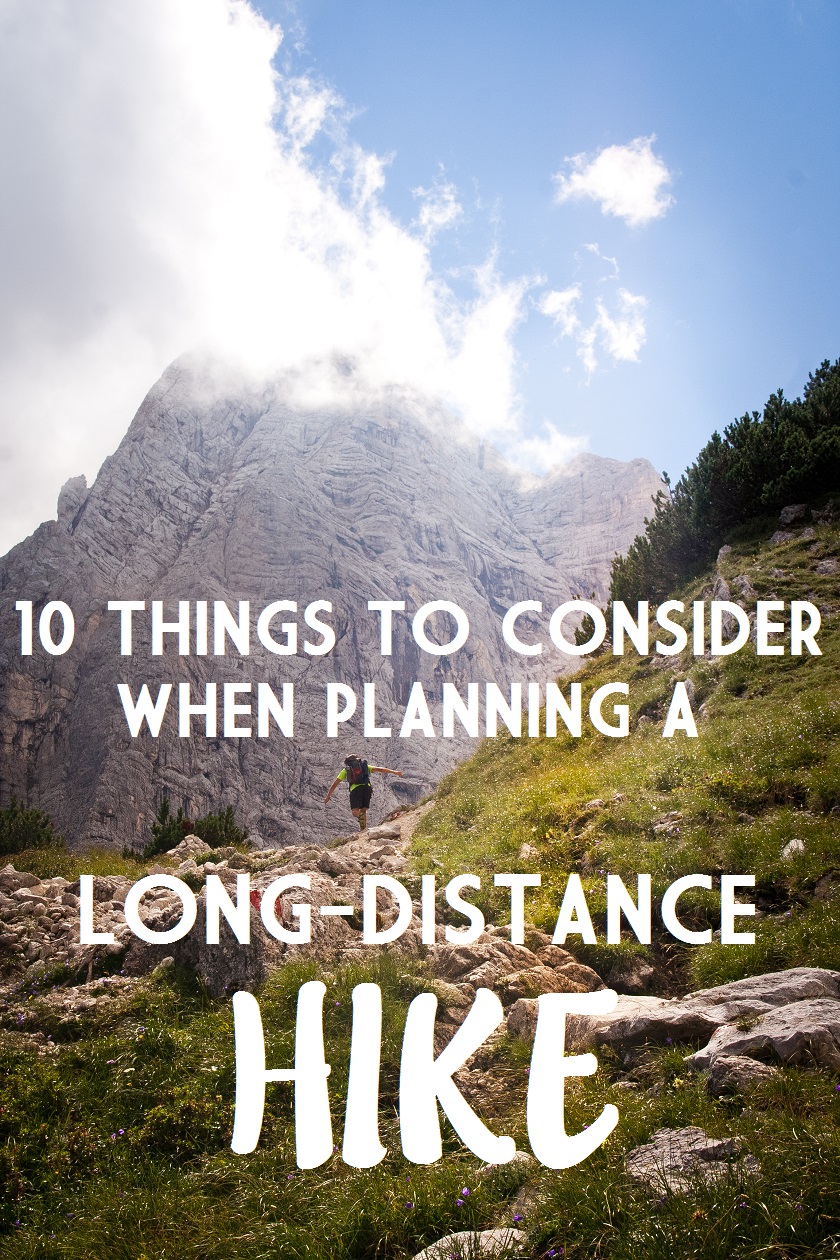
When I was younger, the most exciting travels I could think of were those that took me far, far away from my little village in rural . At age fifteen, I took the opportunity to live on the for six months, and while I was pretty scared to be leaving my friends and family behind for such a long time, the one thought that motivated and encouraged me was: “Hey, when are you ever going to get the opportunity again to take a trip this far away?” At that point, a trip this far was a once-in-a-lifetime kind of thing.
Fast forward ten years. I’ve been lucky enough to be able to travel all around the world, visit far-away places, and frequently find myself waking up somewhere several timezones away from my home town. Now, my idea of the most exciting trip ever has changed significantly: I still love those exotic trips to distant places, but I’ve come to appreciate the travels you can undertake right from home. Long-distance is my favorite out of all of them.
I love filling my backpack with just the bare essentials, lacing my hiking boots, and just taking off, right from where I live. Having only one thing to do all day – walking – is the most liberating feeling for me. Being offline for a week or two, walking in the mountains without even proper cellphone reception, waking up with the sunrise and going to bed right when the sun does, too, is exactly my kind of holiday. Now, if you’re planning one of those hikes as well – here are a few things I’ve learned to consider before heading out into the mountains.
1 – Choose the right backpack
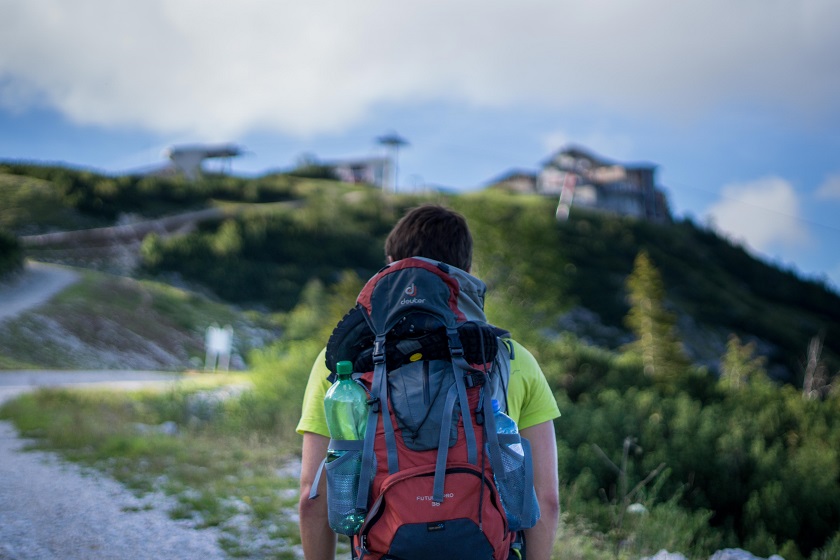
Choosing the right for a long-distance hike was a long process for me. Generally, people tend to opt for one that is too big, which then leads to over-packing (and considering that you’ll have to carry all that weight on your own shoulders all day long, this is definitely something to keep in mind!). In the first few years, I’ve gone through a couple of different backpacks until I found the one that really suited my needs – but figuring out what needs those were exactly was definitely a journey. My best advice would be to really sit down and think about which features you are looking for in a backpack, think back to past experiences, and learn from previous hikes. Also keep in mind the other possible uses you want to get out of this particular backpack – I like to use mine for traveling, as well, so it needed a few extras that otherwise would not be that important on a hike.
I am now happily hiking with a that has everything I want. The perfect backpack is different for everyone, but for me, those were the essential features that I was looking for: small in size; a good net for ventilation on the back; a big waist belt that sits very comfortably on my hips and allocates the weight in an optimal way; a space for my water bag and drinking tube (with a little hole and snap that will allow it to be kept in place while walking) that can double as a laptop holder for when I travel; lots of straps and hooks on the outside for additional gear (like a tent, or mats); and a flat opening that will make it possible to use it more like a suitcase when travelling. The only thing that would come in handy that my current backpack doesn’t feature is an extendable top lid, but it frequently forces me to pack less, so maybe that’s a good thing.
2 – Pick the right shoes
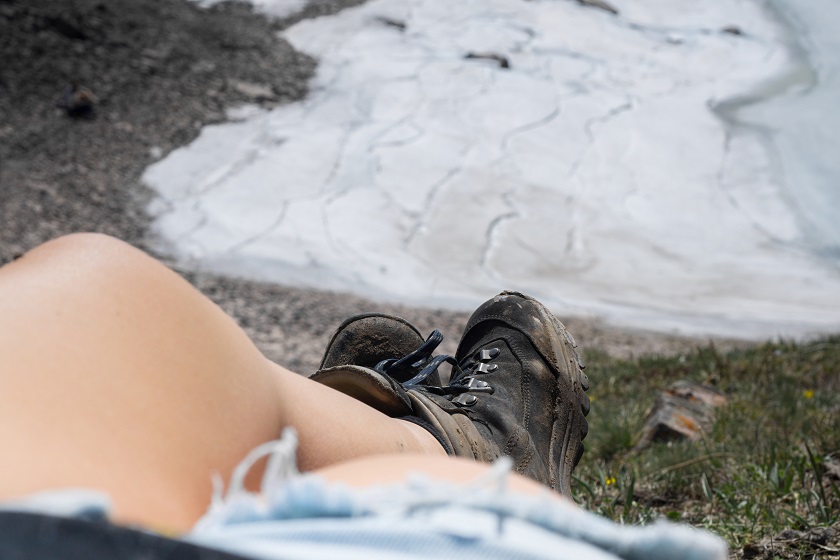
Maybe even more important than a good backpack: the shoes you wear. If you are a hiker, you definitely already know that the number one rule here is to never, NEVER, start a long hike with brand-new shoes or socks. Wear them in before you go on big adventures! Your feet will thank you (and get less blisters).
When inexperienced hikers go out to buy shoes, they often make the mistake of thinking that the heavier and sturdier (and also more expensive) the shoes are, the better. If I had a penny for every over-equipped hiker I see on even the tiniest of mountains, I’d be hiking full-time by now, not worrying about being able to afford rent or food. Unless you are hiking in high alpine surroundings or going on a serious expedition with considerable difficulty, chances are you don’t need the same shoes that the girls and guys who climb the K2s and Annapurnas of this world have. Just make sure your shoes have a solid sole, reach across your ankles, and leave enough space for your feet to be comfortable, and you’ll be good to go.
If you are already very sure-footed in the mountains and have some hiking experience, you could even try going without shoes altogether – barefoot hiking is good for your feet and tons of fun. But – really only try this if you are already a good hiker, otherwise, you could seriously hurt yourself.
3 – The weather
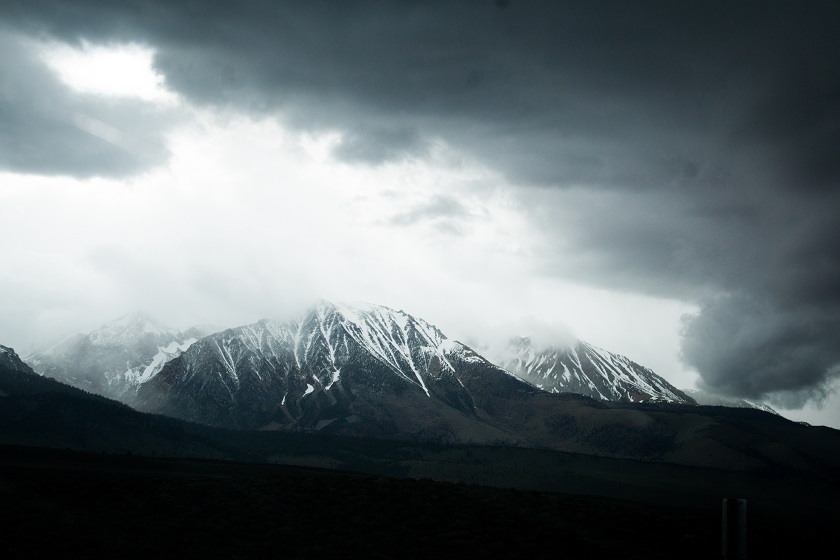
The weather forecast should be your best friend when planning a long-distance hike. Of course, hiking is possible in any weather – just make sure you are prepared for it. Take enough sunscreen, water, and a hat if the sun is going to shine all day long, pack your rain jacket if the weather is going to be bad (actually, pack it in any case, you never know), and prepare for cold temperatures with the right gear (a sleeping bag for temperatures below zero, a very good camping mat, gas cooker, …).
4 – Skimp on beauty products
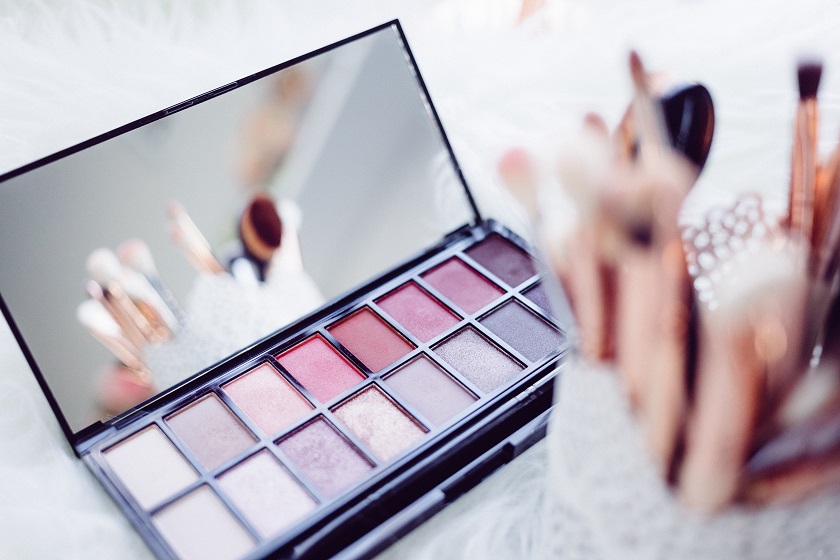
Picture via
When hiking for a long time, you’re going to want to pack the least amount of weight that you can. Beauty products are definitely among the less necessary items on your packing list, so try to take only the bare essentials. To pack even less weight, try either filling up small pots and jars with a little bit of shower gel, shampoo, or cream, or go for solids! I personally ditch the conditioner and shower gel for hikes and only take a bar of solid shampoo from with me to use on my whole body. For the face, I cut a piece of facial soap and carry it in a small tin can, just like a little bit of cream deodorant. A toothbrush, a little bit of tooth paste, sunscreen, and tweezers make my set of beauty essentials complete. It’s enough to survive on for a week or two – and little enough to make me feel as happy as I can possibly be when I get back home again to my fully equipped shower and bathroom.
5 – Decide between taking a tent or hiking from hut to hut
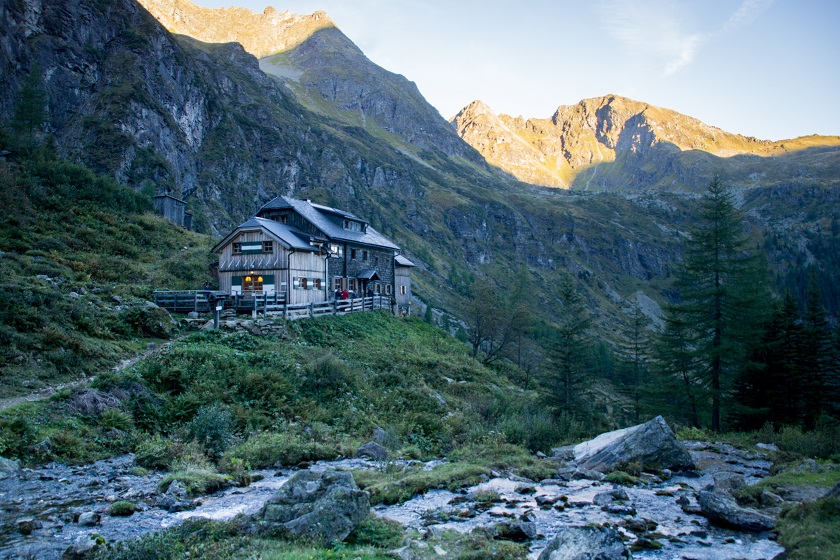
Depending on where you are in the world, how the infrastructure looks like in the mountains, how important amenities like a working toilet or a shower are to you, and how much weight you want to carry, you should decide between taking a tent or hiking from hut to hut (or alternating between the two). I’ve done both, and even if this might downgrade me in the unofficial ranking of adventurers that I’m somehow convinced must exist, I prefer huts to tents. There’s nothing like a warm meal after a long day out in the woods, prepared in a mountain hut, and a cold beer to go along with it. That being said, camping out in the wilderness also has its charm – I certainly love doing that as well, but prefer to go on hikes that don’t take weeks, but maybe only a few days. Either way, it’s your choice, but make sure to consider your options before you head out!
6 – Check where you can fill up your bottles
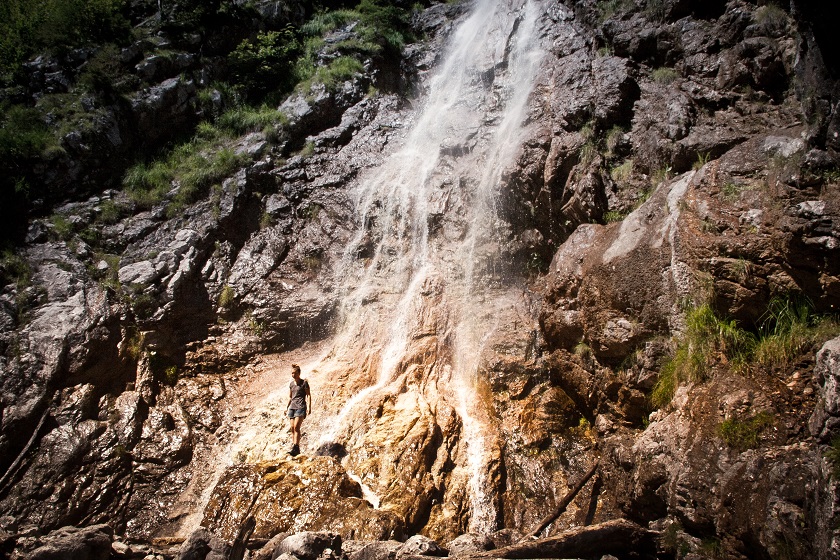
If you are reasonably fit, your body will be able to handle the long distances, steep ascents, and overall physical strain that you will put it through. What it absolutely won’t be able to take, though, is dehydration. One – if not the – most important things on a long distance hike is making sure you’ll have a steady supply of water. If you are hiking in very remote areas, check on the map where you will come across springs and little streams beforehand. Also think about whether these will be dried up or not at the time you are hiking, depending which season it is. To be on the safe side, always carry enough water with you to be able to survive out in the wilderness for a while – it’s better to be safe than sorry.
7 – Think about which tools to bring
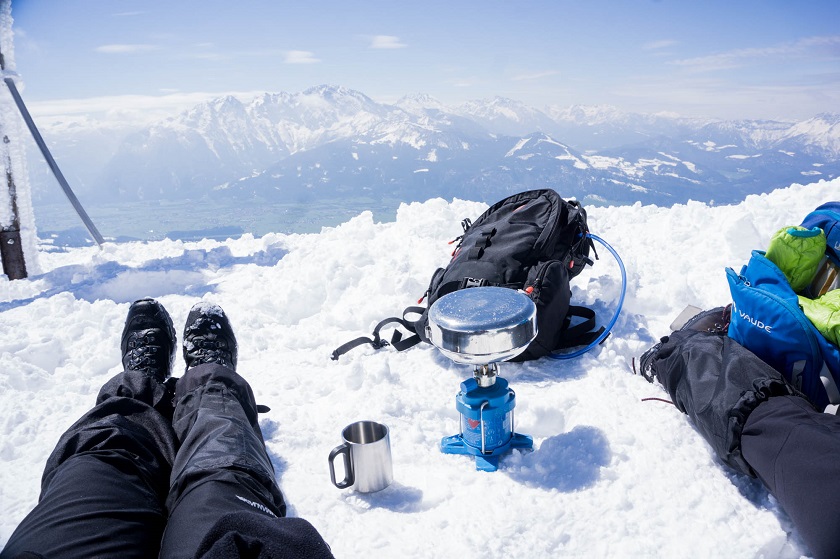
Of course, you want to carry as little weight as possible, but a few tools and other essentials might come in handy. I personally always carry a sharp pocket knife, a headlamp, a first-aid kit, a GPS-enabled device with long-lasting batteries, and wet wipes with me (even though I absolutely hate that even though the wet wipes don’t weigh a lot, they do take up a lot of space in my backpack!). I also usually go out and buy the best blistering plasters I can find (and cringe at the price tag each time). If I am hiking for a longer time in a remote area, I switch my iPhone to a very old Nokia, whose batteries basically would last through the next ice age, whose reception is reliable, and which won’t get destroyed under any possible circumstance. You might want to bring a lightweight pot, a gar cooker, and other camping gear along as well. I also always bring a deck of cards to pass the time in the evenings.
8 – To bring the camera or not to bring the camera?
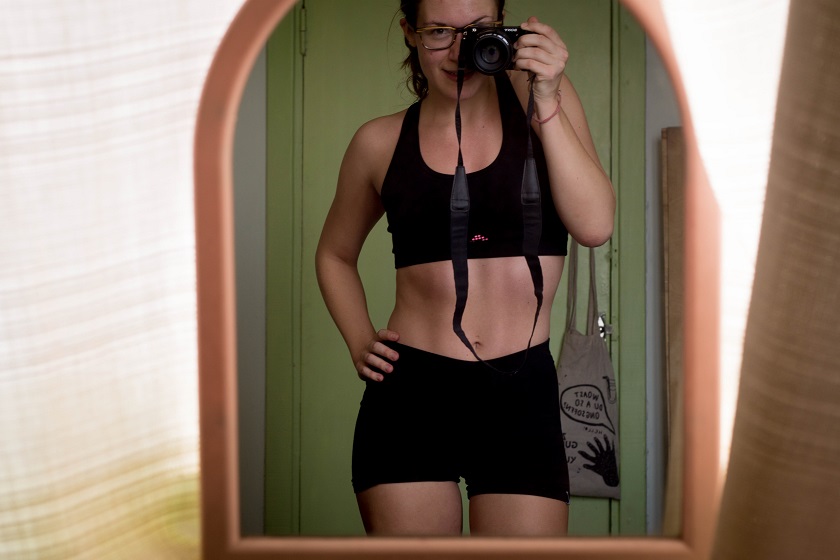
The small “compromise camera” and me before heading out.
Long-distance hikes for me are all about the nature, the challenge, and about getting away from it all. Still, I can hardly stand going out to see such amazing scenery and not bring my . Each time I set out to the mountains, I am faced with the same dilemma – do I bring my heavy camera gear, or do I leave it at home?
When faced with this decision, think about what you want out of this hike and where your priorities are. Taking a very compact camera will certainly be good for your back and feet, but you will be left with inferior pictures – while carrying a DSLR will definitely take a toll on your stamina. I personally usually shoot with a very heavy DSLR, but for a year or so now, I have added an additional camera to my gear: a system camera. It’s lightweight, small, and still rather powerful, so I’ve been quite happy with the compromise. I still take the big one on many hikes, even long-distance ones, but if I am already carrying a lot of other stuff (like a tent and the whole cooking gear), climbing, or skiing, I always have the option to take the small camera and save weight.
Of course, you also always have the option of not taking a camera at all and enjoying nature as you see it – something I definitely need to work on more.
9 – Plan how much food you are going to need
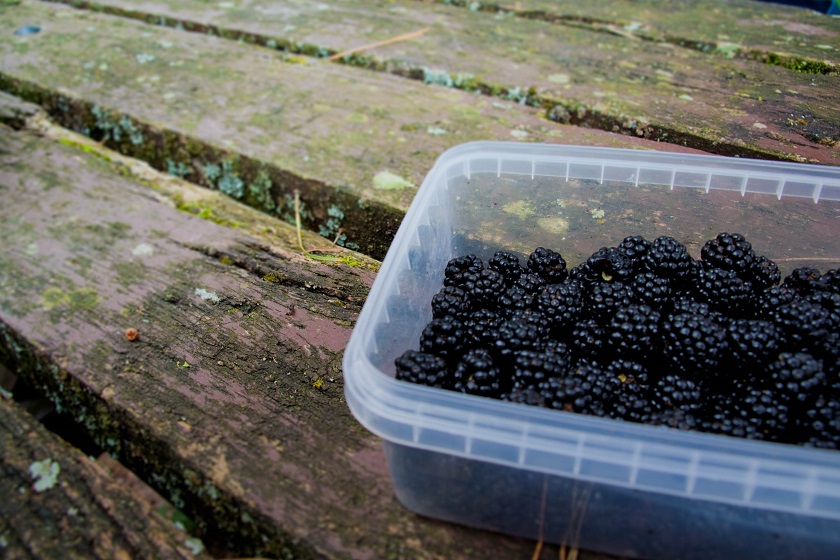
Whether you are going on a hike away from any civilization, or stopping at little mountain huts that serve some food, it’s always a good idea to bring some snacks. Carefully think about how much food you are going to need for the time you are hiking, how often you will be in places where you can stock up on food supplies, and how much you are willing to carry.
Nuts, dried fruit, and granola bars are always a good idea. Dried plums are great to keep your digestive system going at a normal level, even though you are not in your normal circumstances, and nuts will give you lots of energy to keep hiking. I usually also take a loaf of rye bread. If temperatures are low, cheese is great, too, but if it gets too hot, it will start to go bad very quickly.
10 – Know when it is time to cancel the hike
Maybe the most important thing to consider when planning a long-distance hike is knowing when to cancel the hike altogether. Sometimes, the weather conditions might not be right for your level of experience, sometimes, your body might not be up for it – if you have a cold or feel like you are going to get sick, it might be better to rest for a while and do the hike a little later. Either way, even though it might be hard, sometimes it’s better to stay home and postpone the hike.
So there you go, this is my checklist before heading out into the wilderness. Have you ever been on a long-distance hike? Where did you go, and what do you think is most important to think of before?





























